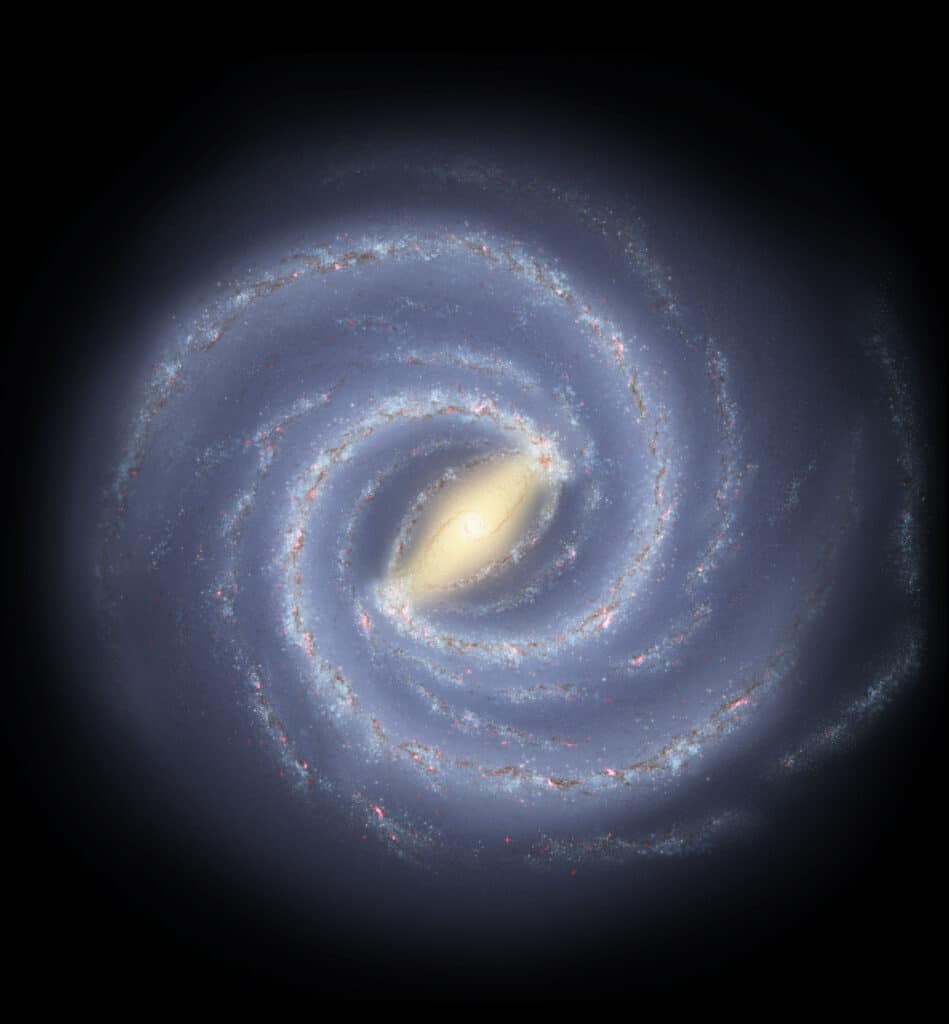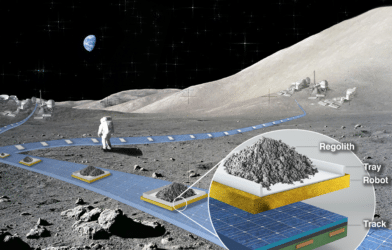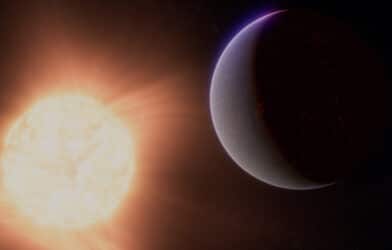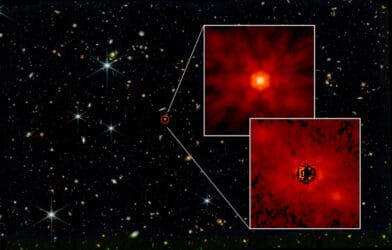Picture the Milky Way — that sprawling expanse of stars, dust, and gas we call home. It might come to mind as a flat spinning disc, much like a vinyl record on a turntable. But, if you were to take an aerial shot of our galaxy, what you’d see is a lot more warped, like an LP record that someone tried to twist. Not just that, it’s got edges that flare out like a billowing skirt.
For years, scientists have been scratching their heads over this. While they knew of this warp and flare, the reason behind it remained shrouded in mystery. That is, until now.
A team from the Center for Astrophysics | Harvard and Smithsonian (CfA) has stepped into the spotlight with calculations that shed light on this enigma. The plot twist? The answer lies in something we can’t even see: dark matter.
If you’re picturing a shadowy, mysterious substance, you’re not entirely off the mark. Dark matter is a form of matter that doesn’t interact with light, which makes it invisible. Yet, it’s believed to account for about 80% of the matter in the universe! Think of it as the backstage crew in a theatre production — you don’t see them, but they’re vital for the show.
How A ‘Tilted Dark Halo’ Impact The Milky Way
The Milky Way sits nestled in what’s called a stellar halo. Imagine a cloud extending much farther into space, surrounding our galaxy. Last year, the Harvard team made waves by suggesting this stellar halo was tilted and shaped rather like a football or a zeppelin. Using this as a stepping stone, they took an educated guess on the shape of the all-encompassing dark matter halo and hit the jackpot. Their calculations, when compared to actual observations of our galaxy, were a near-perfect match.
“A tilted dark halo is actually fairly common in simulations, but no one had explored its effect on the Milky Way,” explains study co-author Charlie Conroy, from Harvard’s Department of Astronomy, in a statement. It turns out that the tilt is an elegant way to explain both the magnitude and direction of our galaxy’s wobbly disk.”

A Cosmic Collision in Our Past?
Here’s where things get even more exciting. The shape of our galaxy suggests a dramatic past — a cosmic smashup. As Jiwon Jesse Han, the study’s lead author, puts it, “If the galaxy was just evolving on its own, it would have had this nice, spherical halo, this nice, flat disk. So the fact that the halo is tilted and has a football-like shape suggests that our galaxy experienced a merger event, where two galaxies collide.”
What’s more, these revelations could hold the key to understanding the properties and true nature of dark matter, a topic that has puzzled scientists for ages. “The fact that the galaxy is not spherical in our data implies that there is some limit to which dark matter can interact with itself,” adds Han.
With newfound confidence in their findings, scientists are hopeful that they’re on the brink of innovative ways to study dark matter. By understanding its impact on the universe, they can perhaps detect tiny pockets of dark matter, or dark sub-halos, that dart around our galaxy.
The research is published in the journal Nature Astronomy.












